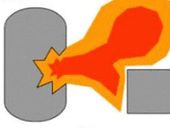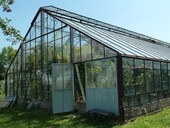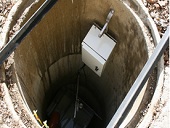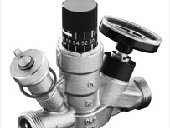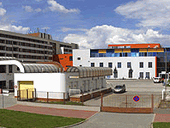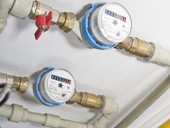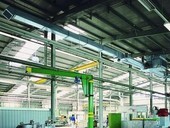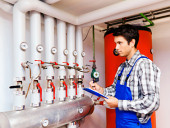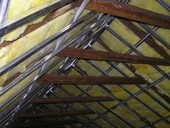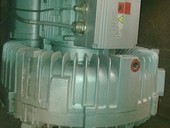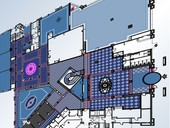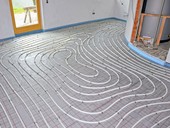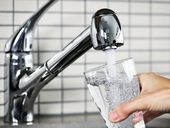The new standard CSN 75 5409 is valid from March 1st 2013. Technical Report on protection against Legionella will apply from May 1st 2013. In case of conflict of energy saving and hygiene prevails hygiene. Size of the hot water tank is chosen according to the requirement of heat pump. Volume of accumulation of solar systems is about 50 l / m 2 of collector area.
Archiv článků od 16.4.2012 do 1.4.2013
The paper focuses on the conditions of fire and risk connected with dust layer. The next part is about thermal degradation of biomass and heat transfer on dust layer. The next part shows test methods for flame spread. The connection of dust layer and possible secondary explosion. In the article is highlighted connection with space and equipment cleaning due to ČSN EN 60079-10-2.
This article summarises the results of research on work intensity in special greenhouses based on measurement of heart rate in correlation with microclimatic environmental working conditions in these greenhouses during the summer period of the year. According to the results of measurement the indoor conditions represented by operative temperature value were higher than value required by low in Czech Republic. In order to these facts, the general conclusion of this study is proposal appropriate operation mode for workers in so specific environment conditions.
Infiltration system is technical equipment absorbing the excess of rainwater that flows from rooftops, roads, car parks and other buildings. Rainwater management and infiltration systems are very important for rainwater drainage and they offer us many ecological and economical benefits and last but not least they represent widening of technical solution scale for rainwater efficient use.
Energy audit in the Czech Republic has twenty years history. The first decade was a period of searching, others ten years were period of legal obligations. The author is one of our first energy auditors. Features personal experience on the development of the methodology, legislation and practical application.
Hydraulic control of heating systems means - except hydraulic control of central heating - hot water system control. Despite the fact that hot water system control is the duty of the law, unlike hydraulic control of heating systems that have been implemented since 1998, hot water systems are controlled sporadically.
This article is focused on plan optimization issues of preventive maintenance based on risk assessment. The aim is to propose a cohesive system layout which involves the maintenance optimisation as a whole and achieve better results compare to simple applying the individual methods. This system is divided into five fundamental phases which are consequently following one after another and guarantee the order and structure of the process. Every phase consist of individual sections which thoroughly describe particular execution and procedures. The proposed system should help readers to obtain sufficient information in order to understand the different parts of the system and enable them to make their own opinion on synergy of systematic methodology which deals with optimization of maintenance. All these aspects are very important in practice due to the complexity of most ventilation, heating and air conditioning systems.
Commonly practiced simple statistical analysis of heat consumption shows differences of measured values, but not thermal energy savings, for which the buildings are insulated and the heating systems re-regulated. Differences of measured values at different temperatures inside buildings have no practical benefit for the consumer because they say nothing about the actual and they do not allow to adjust the heating mode nor by changing the behaviour of people in apartments, nor by any other instrument. Heat consumers lack information on the relations between the average internal temperature of objects during measurement of heat consumption, on the influence of heat gain and possible heat savings in compliance with the legislation provided average internal temperature of the object.
Sloping roofs have been being built for centuries. Until recently, these roofs had only one purpose - to protect the building from rainwater, snow or other climatic influences. Let's look more closely at the current issue of excessive moisture in the roofs and let's show with pictures some specific examples.
The paper is dealing with new ways of handling with household waste – pneumatic pipeline systems. There are introduced different kinds of pneumatic pipeline systems and their main advantages and disadvantages are mentioned. Next part is focused on a vacuum piping system, because this system is the most popular for handling with household waste. This system is described in details. The last chapter is interested in design of vacuum piping systems. There are presented main problems of design, assumptions and possibility of solution.
Maintenance system based on rules of TPM (total productive maintenance) depends on phases of maintenance. Elementary task of well TPM system setted, is maximal allimination of unscheduled equipment shutdown which are caused by logistic and technologic downtime, but at firs downtimes caused by unplanned maintenance. This kind of maintenance mean reduction of production capacity, and advent to insufficient attention by prevention.. Interval of diagnostic quantity measurment, is part of predictiv maintenance which helps with plannig of preventive intervention and eliminated cause failure before shutdown. In order to check the operating parameters it is possible to use vibrodiagnostics, tribodiagnostics, termodiagnostics, non-destructive testing methods and others. It's difficult to choose the right moment to implement maintenance inspection in order to exploit the whole equipment life time and reduced risk of breakdown failure. The fundamental rules for determining the maintenance measurement interval in the diagnostic management system has not been established. Therefore, the emphasis is on determining the interval for measuring of the implementation of periodic data collection, which is more often used than the on-line diagnostic systems for secondary production techniques and technologies with a parallel backup. Results in Johnson Controls manufactury showes, that with technical diagnostic system and with measurement in flexible interval is possible to achieve savings over 2 mil. All this during continuos production of key technology without possibility to do major maintenance in weekly production capacity. TPM system settings from basic level activities to advanced diagnostic methods helps to run equipment in optimal mode whith minimal divergances of cutted piecies outputs, Undeniable contribution to maintenance is also a fact that by making a service action with the deployment of dynamic range measurements, it can even closer determine real life time of bearing and it is possible to use of the maximum potential production of equipment.
Nowadays there is emphasis on energy savings and utilization of renewable energy sources. Therefore, proper selection and design of the heating / cooling system, which should be also able to provide favourable condition of the thermal environment – thermal comfort, is very important. Warm water floor heating is a progressive way of heating, which decreases operation costs on one hand and creates ideal temperature distribution on the other hand.
Decreasing of energy costs leads to increasing interest in systems with better efficiency and thermal comfort. Utilizing of renewable energy sources along with installation of low temperature heating systems results in decreased primary energy consumption and leads to lower operation costs.
In this article experience with application of the new European standard (EN 1264, 2009) for calculation and design of warm water floor heating is presented. The calculation has been carried out for a reference room in a family house, by means of software with application of floor systems from different manufacturers.
Measurement of natural lighting should be performed in a dark surrounding terrain. In light terrain (landscape covered with snow) only for completion. With regard to the brightness of the sky, its stability and colour of sky, it should be performed at the time around noon. It shouldn't rain or be fog. Disadvantage is requirement of uniformly overcast sky, because it happens only few times a year.
zpět na aktuální články

